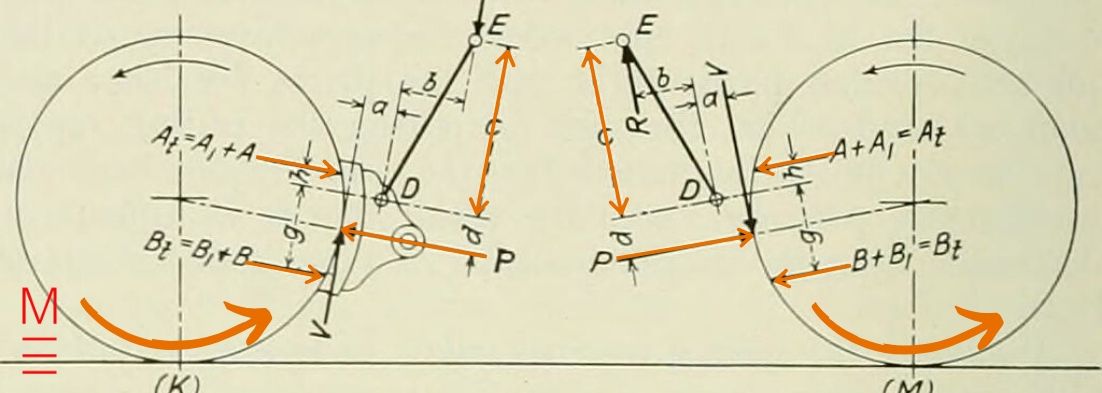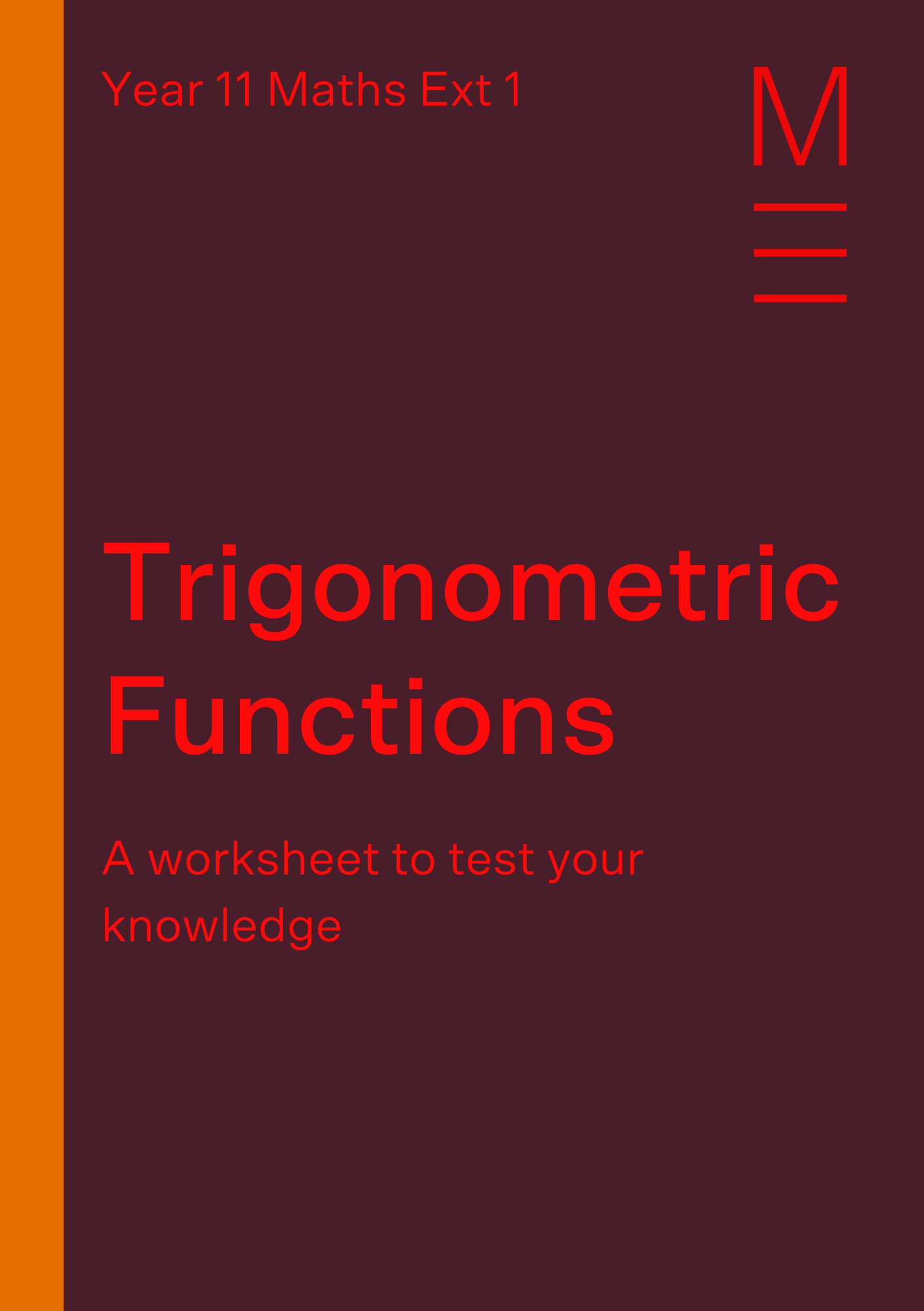Welcome to Matrix Education
To ensure we are showing you the most relevant content, please select your location below.
Select a year to see courses
Learn online or on-campus during the term or school holidays
Learn online or on-campus during the term or school holidays
Learn online or on-campus during the term or school holidays
Learn online or on-campus during the term or school holidays
Learn online or on-campus during the term or school holidays
Learn online or on-campus during the term or school holidays
Learn online or on-campus during the term or school holidays
Get HSC Trial exam ready in just a week
Get HSC exam ready in just a week
Select a year to see available courses
Science guides to help you get ahead
Science guides to help you get ahead

Are you having a hard time with Extension 1 Trigonometric Functions? Well you’re in the right place. In this article, we’re going to explain how to satisfy all of the NESA syllabus outcomes for this topic!
Mastering Trigonometric Functions is a very important skill in high school mathematics. By being able to understand and efficiently use harder formulae, students have an arsenal of methods to use when solving more complex questions. Further, grasping inverse functions provides a deeper insight into the nature of periodic functions, an essential tool in many modelling programs, etc.
Challenge your trig skills with this Year 11 Maths Ext 1 worksheet! Fill out your details below to get this resource emailed to you. "*" indicates required fields
Free Year 11 Maths Ext 1 Trigonometric Functions Worksheet Download

Free Year 11 Maths Ext 1 Trigonometric Functions Worksheet Download
NESA requires students to be proficient in the following syllabus outcomes:
Students should already by familiar with basic trigonometry concepts. This includes being proficient at radian measure and basic trigonometric function. Students can refresh their knowledge on basic trigonometric functions in the following Year 11 Subject Guide:
Before going through what the compound angle formulae are, we will first see what the compound formulae are not. This is one of the most common mistakes students make.
Note carefully:
\begin{align*}
sin (α+β)&≠sin(α)+sin(β)\\
cos(α+β)&≠cos(α)+cos(β)\\
tan(α+β)&≠tan(α)+tan(β)\\
\end{align*}
In fact, \(f(x+y)≠f(x)+f(y)\) for most functions \(f\). The probable (and understandable!) reason why students get this mixed up is because they are expanding as if it was algebra: \(a(b+c)=ab+ac\).
However, rules for functions are different to algebra. In fact, here are the actual Compound Angle Formulae.
The following formulae are true for any real \(α\) and \(β\)
\begin{align*}
sin(α+β)&=sin(α) cos(β)+cos(β) sin(α)\\
cos(α+β)&=cos(α) cos(β)-sin(α) sin(β)\\
sin(α-β)&=sin(α) cos(β)-cos(β) sin(α)\\
cos(α-β)&=cos(α) cos(β)+sin(α) sin(β)\\
\end{align*}
Naturally, these formulae look very complex and possibly overwhelming. A good way to remember it is that:
\begin{align*}
\begin{cases}
&\sin \ ⟹\ \text{Same Sign, Different Function} \\
&\cos \ ⟹ \ \text{Different Sign, Same Function} \\
\end{cases}
\end{align*}
To explain, notice for the first compound angle formula, when you take sine of \(α\) plus \(β\), the formula has a plus in it (Same Sign), however it goes \(\sin \ \cos + \cos \ \sin\) (Different Function).
Try applying this logic to the remaining three formulas to notice the pattern!
The following formula is true for all (defined) real values of \(α, \ β\):
\(\tan(α+β)=\frac{\sin(α+β)}{\cos(α+β)} =\frac{\tan(α)+\tan(β)}{1-\tan(α) \tan(β) }\)(where \(\cos(α+β)≠0\))
Similarly,
\(\tan(α-β)=\frac{\tan(α)-\tan(β)}{1+\tan(α) \tan(β)}\)Try to derive this from the compound angle formula for sin and cos!
Without using a calculator, find the exact value of \(\tan(75°)\).
Note that \(75°=30°+45°\), and both \(30°\) and \(45°\) have exact values when evaluated individually.
\begin{align*}
\tan(75°)&=\tan(30°+45° )\\
&=\frac{\tan(30° )+\tan(45° )}{1-\tan(30° ) \tan(45° ) }\\
&=\frac{(\frac{1}{\sqrt{3}})+(1)}{1-(\frac{1}{\sqrt{3}(1)}})\\
&=\frac{\sqrt{3}+1}{\sqrt{3}-1}\\
\end{align*}
where we multiplied the numerator and denominator by \(\sqrt{3}\) to get to the last step.
Note: an important special case of the Compound Angle Formulae are the Double Angle formulae.
If you let \(α=β\) for \(\sin(α+β)\) or \(\cos(α+β)\) or \(tan(α+β)\), you will get the double angle formulae.
\begin{align*}
\sin(2α)&=2 \sin(α)\cos(α)\\
\tan(2α)&=\frac{2 \tan(α)}{1-\tan^2(α)}\\
\end{align*}
There are three variations for the double angle formula for cosine (the second and third are derived from the first using \(\sin^2(α)+\cos^2(α)=1\))
\begin{align*}
\cos(2α)&=\begin{cases}
&\cos^2(α)-\sin^2(α)\\
&2 \cos^2(α)-1\\
&1-2 sin^2(α)\\
\end{cases}
\end{align*}
Find the exact value of \(\sin(120°)\) using the double angle formula.
Note that \(\sin(120° )=\sin(2×60° )=2 \sin(60°) \ cos(60° )=2(\frac{\sqrt{3}}{2})(\frac{1}{2})=\frac{\sqrt{3}}{2}\).
We could have done this use the ASTC diagram as well, this example is just for illustrative purposes. See the Matrix Workbook or the Worksheet for further use of these formulae.
The sums and products formulae are usually seen in two forms:
These formulae are easier to use if you have the sum of two trigonometric functions and you want to express them as a product:
\begin{align*}
\sin(A)+\sin(B)&=2 \sin(\frac{A+B}{2}) \cos(\frac{A-B}{2})\\
\sin(A)-\sin(B)&=2 \sin(\frac{A-B}{2}) \cos(\frac{A+B}{2})\\
\end{align*}
(The second formula comes directly from the first, since \(-\sin(B)=\sin(-B)\)).
Similarly
\begin{align*}
\cos(A)+\cos(B)&=2 \cos({A+B}{2}) \cos(\frac{A-B}{2})\\
\cos(A)-\cos(B)&=-2 \sin({A+B}{2}) \sin(\frac{A-B}{2})\\
\end{align*}
These formulae are easier to use when you have the product of two trigonometric functions and you want to express them as a sum.
\begin{align*}
\sin(A) \sin(B)&=\frac{1}{2} (\cos(A-B)-\cos(A+B) )\\
\cos(A) \cos(B)&=\frac{1}{2} (\cos(A-B)+\cos(A+B) )\\
\sin(A) \cos(B)&=\frac{1}{2} (\sin(A+B)+\sin(A-B) )\\
\end{align*}
These formulae may look daunting, but actually, you already know them! They are derived from the compound angle formula. Try to prove them yourself!
Express \(\sin(\frac{π}{3})+\sin(\frac{π}{6})\) as the product of trigonometric functions.
Using the sums-to-product formula, we let \(A=\frac{π}{3}\) and \(B=\frac{π}{6}\), and we get
\begin{align*}
\sin(\frac{π}{3})+\sin(\frac{π}{6}) &=2 \sin(\frac{\frac{π}{3}+\frac{π}{6}}{2}) \ cos(\frac{\frac{π}{3}-\frac{π}{6}}{2})\\
&=2 \sin(\frac{π}{4}) \sin(\frac{π}{12})\\
\end{align*}
The t- Formulae arise directly from the compound angle formulae, with a little more insight. They help with converting trigonometric functions into algebraic functions (of \(t\))– which are often far easier to work with!Let \(t=tan(\frac{x}{2})\). The t-formulae as follows:
\begin{align*}
\sin(x)&=\frac{2t}{1+t^2} \\
\cos(x)&=\frac{1-t^2}{1+t^2}\\
\tan(x)&=\frac{2t}{1-t^2}\\
\end{align*}
Note that we can visualise this in a triangle:
[image 1]
Show that
\(1+\tan^2(x)=\sec^2(x)\)using \(t\) formulae.
Let \(t=tan(\frac{x}{2})\). Then, we have expressions for \(\tan(x)\) and \(\cos(x)\) (and hence \(\sec(x)\))
\begin{align*}
\tan(x)&=\frac{2t}{1-t^2}\\
\cos(x)&=\frac{1-t^2}{1+t^2}\\
\end{align*}
Hence,
\begin{align*}
“LHS”&=1+(\frac{2t}{1-t^2})^2\\
&=\frac{(1-t^2 )^2+4t^2}{(1-t^2 )^2}\\
&=\frac{t^4+2t^2+1}{(1-t^2 )^2}\\
&=\frac{(1+t^2 )^2}{(1-t^2 )^2}\\
&=(\frac{1+t^2}{1-t^2 })^2\\
&=\sec^2(x)=”RHS”\\
\end{align*}
Recall from inverse functions topic, when functions do not have one-to-one correspondence, we can restrict the domain of the function and define the inverse function over that smaller domain.
We do this for all three trigonometric functions – \(\sin(x)\), \(\cos(x)\) and \(\tan(x)\).
The following table summarises the inverse functions, along with their domain and range:
| Inverse Function | Domain | Range | Properties |
| \(sin^{-1}(x)\) | \(x∈[-1,1]\) | \(y∈[-\frac{π}{2},\frac{π}{2}]\) | Odd Function. \(\sin^{-1}(-x)=-\sin^{-1}(x)\) |
| \(cos^{-1}(x)\) | \(x∈[-1,1]\) | \(y∈[0,π]\) | Neither Odd nor Even.\(cos^{-1}(-x)=π-cos^{-1}(x)\) |
| \(tan^{-1}(x)\) | \(x∈(-∞,∞)\) | \(y∈(-\frac{π}{2},\frac{π}{2})\) | Odd function. \(\tan^{-1}(-x)=-tan^(-1)(x)\) |
Note: Ensure you always use radians!
A very important result to know is that for \(x∈[0,\frac{π}{2}],\sin^{-1}(x)+\cos^{-1}(x)=\frac{π}{2}\)
Without using a calculator, find the exact value of \(\sin^{-1}(\sin(-\frac{π}{6} ))\).
Note: \(f^{-1} (f(x))=x\) for all \(x∈ \)(“restricted” ) “domain of” \(f\) is a key property to remember. In this case where \(f(x)=sin(x)\) we have that \(-\frac{π}{6}∈[-\frac{π}{2},\frac{π}{2}\) and hence applying the result we get
\(\sin^{-1}(\sin(\frac{-π}{6}) )=-\frac{π}{6}\).
You should also be able to graph the inverse trigonometric functions. If you ever forget, you can draw the standard trigonometric functions for the restricted domain, and then reflect them about the line \(y=x\).
| Inverse Function | Graph |
| \(sin^{-1}(x)\) | ![beginner's-guide-year-11-extension1-trigonometric-functions-sketching-inverse-functions-[sin]](https://www.matrix.edu.au/wp-content/uploads/2020/05/beginners-guide-year-11-extension1-maths-trigonometric-functions-sketching-inverse-functions-sin.png) |
| \(cos^{-1}(x)\) | ![beginner's-guide-year-11-extension1-maths-trigonometric-functions-sketching-inverse-functions-[cos]](https://www.matrix.edu.au/wp-content/uploads/2020/05/beginners-guide-year-11-extension1-maths-trigonometric-functions-sketching-inverse-functions-cos.png) |
| \(tan^{-1}(x)\) | ![beginner's-guide-year-11-extension1-maths-trigonometric-functions-sketching-inverse-functions-[tan]](https://www.matrix.edu.au/wp-content/uploads/2020/05/beginners-guide-year-11-extension1-maths-trigonometric-functions-sketching-inverse-functions-tan.png) |
As with other functions, we can sketch variations of these graphs by scaling and translation as covered in the Graphical Transformations topic.
Sketch \(y=\sin^{-1}(2x)+3\).
Note, the first thing to do is to determine the new domain after squashing the graph horizontally.
\begin{align*}
-\frac{π}{2}&≤2x≤\frac{π}{2}\\
-\frac{π}{4}&≤x≤\frac{π}{4}\\
\end{align*}
The \(+3\) as the effect of shifting the graph up by \(3\) units. Hence, the overall graph will look like this:
![beginner's-guide-year-11-extension1-trigonometric-functions-concept-check-solutions-[question-5]](https://www.matrix.edu.au/wp-content/uploads/2020/05/beginners-guide-year-11-extension1-maths-trigonometric-functions-concept-check-solutions-question-5.png)
The Matrix Year 11 Maths Extension 1 Course will provide you with detailed and clear theory, a wide-range of practice questions and expert teachers to guide you through it all. Learn more.
Boost your Maths marks!
Expert teachers, weekly quizzes, one-to-one help! Ace your next Maths Adv assessment with Matrix+ Online.
© Matrix Education and www.matrix.edu.au, 2025. Unauthorised use and/or duplication of this material without express and written permission from this site’s author and/or owner is strictly prohibited. Excerpts and links may be used, provided that full and clear credit is given to Matrix Education and www.matrix.edu.au with appropriate and specific direction to the original content.